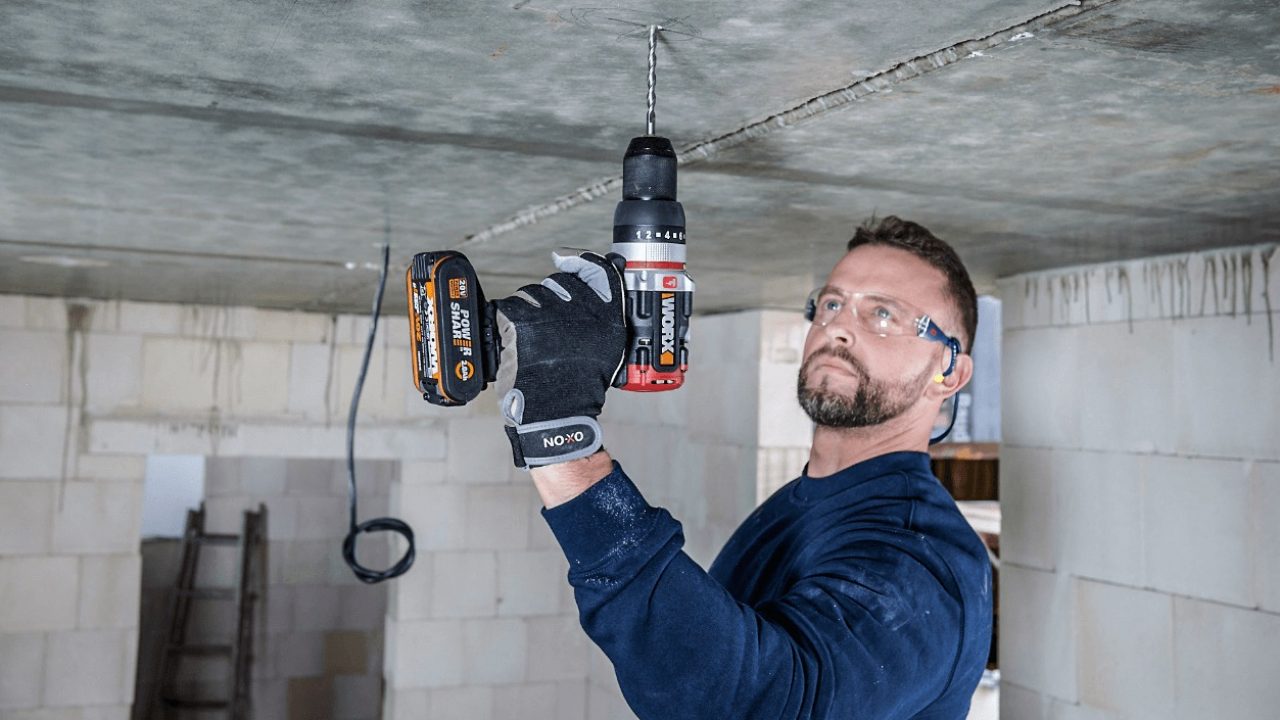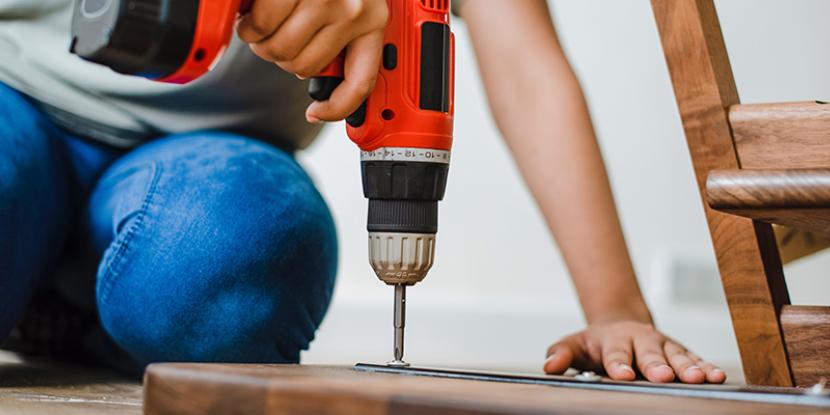Do power tools use much electricity? If you’ve ever wondered about the power consumption of these handy devices, you’re in the right place! Power tools are incredibly useful for DIY projects or professional tasks, but it’s important to understand their impact on your electric bill. In this article, we’ll explore the energy usage of power tools and provide you with some valuable insights. So, let’s dive in!
When you’re working with power tools, it’s natural to wonder how much electricity they consume. Well, the energy usage of power tools can vary depending on the type, size, and usage patterns. Some power tools, like drills or sanders, typically consume a moderate amount of electricity, while others, such as table saws or air compressors, may use more due to their higher power requirements.
Factors like the power rating of the tool, the duration of use, and the load it handles can all influence its energy consumption. For example, a powerful tool used for an extended period will consume more electricity compared to a lighter-duty tool used for a shorter duration. So, it’s essential to consider these factors when estimating the electricity usage of power tools.
Understanding how much electricity your power tools use can help you plan your projects efficiently and manage your energy consumption. It’s always a good idea to check the power rating of your tools and use them wisely. In the next section, we’ll delve deeper into specific power tools and their energy requirements. So, stay tuned to discover more about the energy usage of your favorite tools!

**
Do Power Tools Use Much Electricity?
**
Power tools have become an essential part of many DIY enthusiasts and professionals’ toolkits. From drills to saws, these tools provide convenience and efficiency in getting tasks done. However, you may wonder if using power tools consumes a significant amount of electricity. In this article, we will explore the energy consumption of power tools, factors that affect electricity usage, and tips on maximizing efficiency.
**
Factors Affecting Power Tools’ Electricity Usage
**
Using power tools efficiently not only saves energy but also reduces the strain on your wallet. Here are the essential factors that affect power tools’ electricity usage:
**1. Power Rating:** Power tools come with a power rating specified in watts. This rating indicates the amount of electricity the tool consumes while operating. Higher-rated power tools will generally consume more electricity than lower-rated ones.
**2. Operation Time:** The duration for which you use a power tool affects its electricity usage. The longer you use a tool, the more energy it will consume. Therefore, using power tools for extended periods without a break can result in higher electricity consumption.
**3. Load on the Tool:** The workload on a power tool determines the energy it consumes. When using a tool on high-intensity tasks or against heavy resistance, it may draw more power from the electrical supply, leading to increased electricity usage.
**
Energy-Efficient Power Tool Usage
**
To make the most of your power tools while minimizing electricity usage, consider the following tips:
**1. Choose the Right Tool for the Job:** Selecting a power tool with the appropriate power rating for the task can help optimize energy consumption. Using a high-powered tool for light-duty work wastes electricity and increases your utility bill.
**2. Maintain and Lubricate Your Tools:** Regular maintenance and lubrication of power tools ensure they operate smoothly and efficiently. Well-maintained tools require less energy to perform at their best, reducing electricity consumption.
**3. Use Proper Techniques:** Understanding proper power tool techniques and using them efficiently can make a significant difference in electricity usage. Proper handling and positioning of the tool contribute to its overall efficiency.
**4. Be Mindful of Standby Power:** Some power tools, such as cordless drills, continue to consume a small amount of power even when not in use. Make sure to unplug the charger and remove the battery when the tool is fully charged to avoid unnecessary energy consumption.
**5. Consider Corded vs. Cordless Tools:** Corded power tools directly draw electricity from an outlet, whereas cordless tools rely on batteries. If you have the option, corded tools can be more energy-efficient since they don’t rely on charging and discharging batteries.
**
Are Hand Tools a More Efficient Alternative?
**
While power tools offer convenience and speed, hand tools can be a more energy-efficient alternative for certain tasks. Hand tools require manual exertion, eliminating the need for electricity altogether. They can be particularly suitable for small repairs, precision work, or situations where electricity is unavailable.
Consider the following advantages of using hand tools:
**1. Lower Energy Consumption:** Hand tools do not require electricity, making them energy-efficient. They are an excellent option for reducing dependency on power-consuming tools for minor tasks.
**2. Portability and Durability:** Hand tools are often lightweight, portable, and durable. They don’t rely on electrical cords, chargers, or batteries, making them easy to use in different locations without the hassle of electrical connections.
**3. Reliability and Versatility:** Hand tools are known for their reliability and versatility. They can be used in various applications, allowing for precise control and flexibility in completing tasks.
While power tools have their advantages, incorporating hand tools into your tool collection can contribute to a more sustainable and energy-efficient approach to DIY projects.
**
Conclusion
**
Power tools do consume electricity, and their energy usage depends on factors such as power rating, operation time, and workload. However, by choosing the right tool, practicing efficient techniques, and being mindful of energy consumption, you can optimize power tool usage and minimize electricity usage. Additionally, considering hand tools as a more energy-efficient alternative for certain tasks can further contribute to reducing your overall energy consumption. By being conscious of your energy usage and making informed choices, you can strike a balance between getting tasks done efficiently and practicing energy conservation.
Key Takeaways: Do Power Tools Use Much Electricity?
- Power tools can use a lot of electricity, especially if used for long periods of time.
- Some power tools are more energy-efficient than others, so it’s important to choose wisely.
- Using proper power tool settings and techniques can help minimize electricity usage.
- Regular maintenance and cleaning of power tools can improve their energy efficiency.
- Using alternative power sources, like battery-operated tools, can reduce electricity consumption.
Frequently Asked Questions
Looking for answers about power tools and their electricity usage? We’ve got you covered! Check out the commonly asked questions below:
1. How much electricity do power tools consume?
Power tools typically vary in their electricity consumption, depending on the type and size of the tool. Smaller tools like drills or sanders usually require around 3-10 amps of electricity. Medium-sized tools like circular saws or jigsaws might consume between 10-15 amps. Larger power tools such as table saws or miter saws can consume 15-20 amps or more. Remember, the power consumption may differ based on the specific brand and model of the tool.
To get a more accurate picture of how much electricity a power tool uses, you can check the tool’s specifications provided by the manufacturer. This information is often available in the instruction manual or on the tool’s packaging. It’s essential to consider the power requirements of your tools when planning electrical circuits or using them with extension cords.
2. Are power tools more energy-efficient compared to traditional hand tools?
Yes, power tools are generally more energy-efficient than their traditional hand tool counterparts. The motorized nature of power tools allows them to perform tasks more quickly and with less physical effort. As a result, the energy expended by the user is reduced. Additionally, power tools tend to have mechanisms that control energy flow, enabling them to operate only when necessary. For example, most power tools have a trigger switch that activates the tool when pressed and deactivates it when released.
This ability to control the energy flow makes power tools more efficient, allowing you to use electricity only when needed. Traditional hand tools, on the other hand, rely on manual force for operation and require more exertion from the user. While power tools may initially require electricity to run, their efficiency in completing tasks can result in overall energy savings and increased productivity.
3. Can power tools be used with renewable energy sources?
Yes, power tools can be used with renewable energy sources such as solar or wind power. As long as the renewable energy system provides a consistent and sufficient power supply, power tools can function smoothly. By connecting power tools to a renewable energy source, you can reduce your carbon footprint and reliance on fossil fuels. It’s important to note that the power output and compatibility of the renewable energy system should meet the electrical requirements of the power tools you intend to use.
Before connecting power tools to a renewable energy system, ensure you have the necessary equipment and understanding of electrical connections. Consult with a professional or refer to the user manuals of both the power tools and the renewable energy system to ensure safe and efficient operation.
4. Do cordless power tools consume less electricity?
Cordless power tools are designed to offer more flexibility and portability compared to their corded counterparts. While they don’t directly consume electricity, cordless power tools still require energy to operate. Instead of using a direct electrical connection, cordless power tools are powered by rechargeable batteries. The electricity consumed by a cordless power tool depends on the capacity and efficiency of the battery.
Cordless power tools are generally more energy-efficient during use since they don’t have power cords that can cause energy loss. However, the charging process for the batteries might require electricity. It’s important to keep the rechargeable batteries in good condition to maintain their efficiency and prolong their lifespan. Choosing higher-capacity batteries and using them wisely can help maximize the runtime of cordless power tools while minimizing electricity consumption.
5. Are there energy-saving tips for using power tools?
Absolutely! Here are a few energy-saving tips when using power tools:
First, make sure to use the right tool for the job. Using a power tool that is overpowered or underpowered for a particular task can result in wasted energy. Also, keep your tools clean and well-maintained. Properly maintained tools tend to operate more efficiently, requiring less energy to accomplish tasks.
Another tip is to minimize idling time. When you’re not actively using a power tool, make sure to turn it off or use power-saving modes if available. Additionally, using power tools in short bursts instead of continuous operation can save energy. Finally, consider using power tools with adjustable speed settings. Lowering the speed when possible can conserve electricity while still getting the job done effectively.

Summary
Power tools can use a lot of electricity, but it depends on the specific tool and how it’s used. Tools like drills and saws generally use more electricity than small handheld tools. Leaving power tools plugged in can waste electricity, so it’s important to unplug them when not in use. Using power tools efficiently and practicing good energy conservation habits can help reduce electricity usage.
When deciding to purchase a power tool, it’s helpful to consider energy-efficient models and look for tools with power-saving features. Being mindful of electricity usage while using power tools can lead to lower energy bills and a more sustainable environment. Remember, every little bit of energy saved helps!
